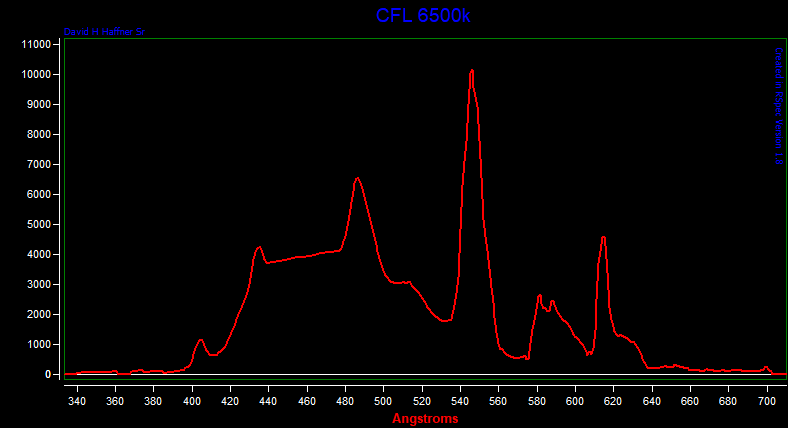Well this revised version is certainly doing better than I thought it would, especially since its using a 4.7GB DVD piece as a diffraction grating :)
The Rspec capture program is invaluable, and I will be purchasing it before the trial date expires, I'm sold!
It has features that are easier and better thought out (not to mention a far better user manual,) than Spectragryph 1.2.7
Below is the raw data capture from Rspec:

This is the actual CFL spectral image from Rspec (cropped):


Above is the calibrated CFL spectrum ( 6500K/23W/120VAC) and below is the FWHM data:

Right now I have a resolution factor of 3.4nm, not too bad but I can get it down a lot more with some fine tuning, hopefully to at least 2nm, this is due in part to limitations of the ELP cmos camera and using a DVD piece as a diffraction grating, (ruled gratings have random imperfections within their spacings.)
 David H Haffner Sr
David H Haffner Sr
Discussions
Become a Hackaday.io Member
Create an account to leave a comment. Already have an account? Log In.